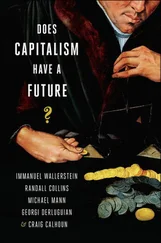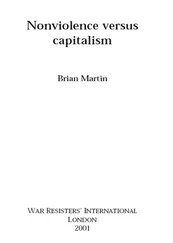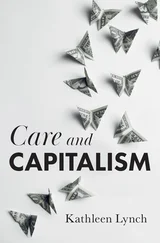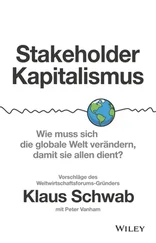Klaus Schwab - Stakeholder Capitalism
Здесь есть возможность читать онлайн «Klaus Schwab - Stakeholder Capitalism» — ознакомительный отрывок электронной книги совершенно бесплатно, а после прочтения отрывка купить полную версию. В некоторых случаях можно слушать аудио, скачать через торрент в формате fb2 и присутствует краткое содержание. ISBN: , Жанр: economics, на английском языке. Описание произведения, (предисловие) а так же отзывы посетителей доступны на портале библиотеки ЛибКат.
- Название:Stakeholder Capitalism
- Автор:
- Жанр:
- Год:неизвестен
- ISBN:9781119756149
- Рейтинг книги:4 / 5. Голосов: 1
-
Избранное:Добавить в избранное
- Отзывы:
-
Ваша оценка:
- 80
- 1
- 2
- 3
- 4
- 5
Stakeholder Capitalism: краткое содержание, описание и аннотация
Предлагаем к чтению аннотацию, описание, краткое содержание или предисловие (зависит от того, что написал сам автор книги «Stakeholder Capitalism»). Если вы не нашли необходимую информацию о книге — напишите в комментариях, мы постараемся отыскать её.
Individual agency:
A clearly defined social contract:
Planning for future generations:
Better measures of economic success: Stakeholder Capitalism: A Global Economy that Works for Progress, People and Planet
Stakeholder Capitalism
Stakeholder Capitalism — читать онлайн ознакомительный отрывок
Ниже представлен текст книги, разбитый по страницам. Система сохранения места последней прочитанной страницы, позволяет с удобством читать онлайн бесплатно книгу «Stakeholder Capitalism», без необходимости каждый раз заново искать на чём Вы остановились. Поставьте закладку, и сможете в любой момент перейти на страницу, на которой закончили чтение.
Интервал:
Закладка:
America faced a difficult balancing act. It was determined not to repeat the mistakes from the Treaty of Versailles, which ended World War I. Signed in 1919, the Treaty of Versailles saddled the defeated Central Powers (Germany, Austria-Hungary, the Ottoman Empire, and Bulgaria) with an unbearable debt load. This curtailed their economic development and led to an erratic economic recovery, which planted the seeds for the Second World War.
After World War II, Washington took another approach. It wanted to revive the European economies that lay within its sphere of influence, including the parts of Germany under British, French, and American occupation. The United States wanted to promote trade, integration, and political cooperation. As early as 1944, America and its allies had created economic institutions such as the International Monetary Fund and the International Bank for Reconstruction and Development (now part of the World Bank). 4 4 Organisation for Economic Co-operation and Development (OECD), Eurostat, https://ec.europa.eu/eurostat/statistics-explained/pdfscache/1488.pdf .
Over the decades that followed, they continued their efforts to develop a stable, growing economic system in West Germany and throughout Western Europe.
From 1948 onward, the United States and Canada also provided specific regional aid. Through the Marshall Plan, named after then–US Secretary of State George Marshall, the United States helped Western European countries purchase American goods and rebuild their industries, including Germany and Italy. Providing aid to former Axis powers was a contentious decision, but it was deemed necessary because without the German industrial motor, there could be no strong, industrial Europe. (The Organisation for European Economic Cooperation and Development (OEEC), the forerunner of the OECD, was an important administrator of the program.)
America did not limit its efforts to aid. It also encouraged trade by setting up European markets for coal, steel, and other commodities. That led to the creation of the European Coal and Steel Community, the embryonic form of what is now the European Union. In Asia, too, the United States provided aid and credit to countries including Japan, China, the Republic of Korea, and the Philippines. Elsewhere, the Soviet Union expanded its sphere of influence, promoting an economic model based on centralized planning and state ownership of production.
Local governments, industries, and workers also played a role in the reconstruction effort. For example, in 1947, the Zeppelin Foundation transferred almost all its assets to the city of Friedrichshafen 5 5 Friedrichshafen, History of the Zeppelin Foundation, https://en.friedrichshafen.de/citizen-city/zeppelin-foundation/history-of-the-zeppelin-foundation/ .
in the hopes of reigniting a prosperous future for the Zeppelin companies and their workers. At the same time, Friedrichshafen's citizens worked long days to rebuild their homes. Women played a special role in this rebuilding and in much of the initial work of reconstruction. German magazine Der Spiegel later recalled: “With so many men killed in the war, the Allies relied on women to do the hard work of clean-up.” 6 6 Der Spiegel, A Century-Long Project, October 2010, https://www.spiegel.de/fotostrecke/photo-gallery-a-century-long-project-fotostrecke-56372-5.html .
Just as a jigsaw puzzle requires every piece to be placed correctly to create a complete picture, the work of reconstruction required every resource to be deployed and every human effort to be mobilized. It was a task that the entire society took to heart. One of the biggest, most successful manufacturers in Ravensburg was a family enterprise that eventually renamed itself Ravensburger. 7 7 The company was founded as the Otto Maier Verlag and later changed its name to Ravensburger.
It resumed its production of puzzles and children's books, a business that continues to this day. And in Friedrichshafen, ZF, a subsidiary of the Zeppelin Foundation, re-emerged as a manufacturer of car parts. Companies like these, often from Germany's famous Mittelstand , i.e., the small and mid-sized businesses that form the backbone of the German economy, played a critical part in the post-war economic transformation.
The Glorious Thirty Years in the West
For many people living in Europe—myself included—the relief of the end of the war soon made way for the fear of another one. The free market approach in US-occupied West Germany and the rest of Western Europe clashed with the centrally planned economic model of the Soviet Union, which held sway over East Germany and the rest of Eastern Europe. Which would prevail? Was peaceful coexistence possible, or did things have to end in a head-on conflict? Only time would give us the answers.
At the time, the results were not clear to us or anyone else. This was a battle of ideologies, economic systems, and geopolitical hegemony. For decades, both powers entrenched their positions and their competing systems. Asia, Africa, and Latin America saw the same ideological battle between capitalism and communism play out.
With the benefit of hindsight, we know that the economic institutions the United States created, based on capitalism and free markets, were building blocks for an era of unparalleled shared economic prosperity. Combined with the will of many people to rebuild, they laid the groundwork for decades of economic progress and economic dominance of the West over the “rest.” The Soviet model of centralized planning initially bore fruit, too, allowing it to prosper at first, but it would later collapse.
Beyond the economic shifts, other factors shaped our modern era. Many parts of the world, including the United States and Europe, had a baby boom. Workers were drawn away from the nihilistic demands of wartime production to the socially productive work during peacetime. Education and industrial activity expanded. The leadership provided by heads of government, such as Konrad Adenauer in Germany or Yoshida Shigeru in Japan, was a crucial piece of the puzzle too. They committed themselves and their governments to reconstructing their economies and societies in an inclusive way and to developing strong relations with the Allies aimed at a sustained peace, rather than give in to the quest for revenge that had dominated after the First World War. Given the national focus on community and economic reconstruction, there was an increase in societal cohesion (which is more deeply discussed in Chapter 4 Конец ознакомительного фрагмента. Текст предоставлен ООО «ЛитРес». Прочитайте эту книгу целиком, купив полную легальную версию на ЛитРес. Безопасно оплатить книгу можно банковской картой Visa, MasterCard, Maestro, со счета мобильного телефона, с платежного терминала, в салоне МТС или Связной, через PayPal, WebMoney, Яндекс.Деньги, QIWI Кошелек, бонусными картами или другим удобным Вам способом.
).
Between 1945 and the early 1970s, these factors came together to drive a Wirtschaftswunder, or economic miracle, in Germany and the rest of Europe. A similar boom got underway in the United States, Japan, and South Korea (and, initially, in the Soviet Union). The West entered its golden age of capitalism, and the innovations of the Second Industrial Revolution were widely implemented: highways for car and truck transport were built en masse, the age of commercial flying arrived, and container ships filled the sea lanes of the world.
Читать дальшеИнтервал:
Закладка:
Похожие книги на «Stakeholder Capitalism»
Представляем Вашему вниманию похожие книги на «Stakeholder Capitalism» списком для выбора. Мы отобрали схожую по названию и смыслу литературу в надежде предоставить читателям больше вариантов отыскать новые, интересные, ещё непрочитанные произведения.
Обсуждение, отзывы о книге «Stakeholder Capitalism» и просто собственные мнения читателей. Оставьте ваши комментарии, напишите, что Вы думаете о произведении, его смысле или главных героях. Укажите что конкретно понравилось, а что нет, и почему Вы так считаете.












